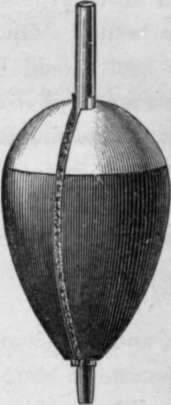From Land And Pier. Part 6
Description
This section is from the book "Sea Fishing", by John Bickerdyke. Also available from Amazon: Sea Fishing.
From Land And Pier. Part 6
There are three typical positions on a rocky coast. The angler may find himself standing on a precipitous rock with deep water just under his feet, and is, as regards the fish, much in the same position as if he were in a boat; that is to say, he can fish right underneath the point of his rod, and may use a paternoster or float tackle whether the bottom be rocky or sandy. If it be rocky and covered with seaweed the lowest hook of the paternoster must be placed two feet or more above the lead, so that it may play well above the weeds. The angler may, of course, use an ordinary paternoster if only he be careful not to lower the lead too near the bottom. Once having ascertained the depth to which the lead should be lowered in such places, it is a good plan to tie a small piece of cotton round the line and unreel no further, readjusting the cotton from time to time as the water rises.
What I may term the second position is when there is a sandy bottom coming right up to the base of the rocks. Then, of course, the angler can fish in any way he pleases—on the bottom, in midwater, or near the surface.
If the rocks stretch away for some distance, and the fish are, say, fifteen or twenty yards out to sea, then to cast out bottom tackle—by which I mean tackle which lies on the bottom— among these rocks and seaweeds would be simply folly, as it would be lost to a certainty ; the only plan, then, is either to spin or to use float tackle.
On the construction of float tackle there is not a great deal to be said. The size of the hook and the strength of the gut necessarily depend on the fish we expect to catch, and the size of the float is regulated by the weight of leads which it is desirable to use to keep the bait near the bottom. If we have to cast out a long distance, a large pear-shaped cork float and at least an ounce of lead on the line will be required. But there should be two clear feet of gut between the lead and the hook ; that is important. Round rocky points where the tide sets strongly float tackle can be cast out, and the line being used on a reel, allowed to run out with the current. It will probably be brought round into the eddy on one side of the rocks, working almost to the feet of the angler.
A handy float, named after the ' Fishing Gazette,' is shown m the illustration. It is as useful in salt as in fresh water, and is most easily put on or taken off the line, which has only to be may be about seven inches in length, the lower one double that length if there are flat fish about.
When fishing under the point of the rod for codling or whiting, it is a capital plan to fix a pipe lead on the end of the line, and below it a yard of gut on which are two hooks (eighteen inches apart) baited with mussels, lugworms, or pilchards, etc. The depth must be ascertained with considerable care, and just so much line unreeled that the end hook is checked close to the top of the seaweed. I have caught many codling with passed through the slot in the side of the float and pegged in the centre.

Continue to:
- prev: From Land And Pier. Part 5
- Table of Contents
- next: Float
Tags
fishing, hooks, bait, fishermen, spanish mackerel, mackerel fishing
